The Acer Swift 3 SF315-41 Review: Ryzen Meets Laptop
by Brett Howse on May 3, 2018 8:00 AM EST- Posted in
- Laptops
- Acer
- AMD
- Ryzen
- Ryzen Mobile
- Raven Ridge
Wireless
Acer has outfitted the Swift 3 with a wireless NIC we’ve never tested before, at least not with this branding. The Qualcomm QCA6174A is a 2x2:2 802.11ac network adapter with MU-MIMO support and Bluetooth 4.2 It’s also the basis of the Killer 1535, which we’ve seen in plenty of devices.
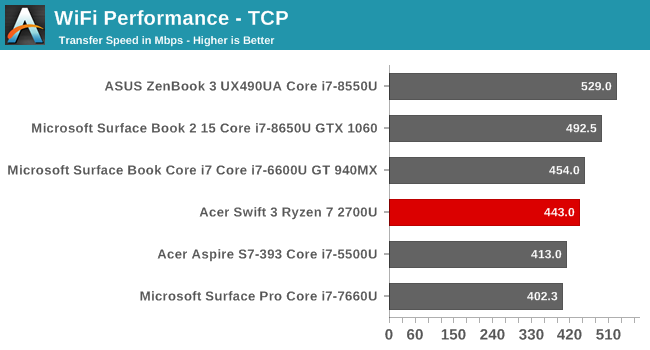
The performance in terms of bandwidth is fine for the Qualcomm NIC, but much like the Killer 1535, it suffered from several reliability issues during our testing. Several times the NIC would drop off completely, and the machine would have to be restarted to get it to see any access point again. This happened during two battery life tests, and a few other times as well, and is awfully similar to issues we saw with the Killer version of this adapter. Unfortunately we’re at a point in the PC space where there’s not a lot of choice for a quality NIC right now. We did reach out to Acer and they said they’ve not seen this issue, but this is an issue that’s plagued devices with the similar Killer 1535.
Speakers
Acer uses the Acer TureHarmony technology for their speakers in the Swift 3, and the laptop has stereo speakers, but compared to many other laptops, they have a sound that is richer than many other laptops we’ve tested, and there’s plenty of volume as well, with a maximum SPL of 84.5 dB(A) on our test track.
Thermals
With a 15-Watt TDP processor in a large 15-inch laptop, there’s going to be benefits for cooling, and that definitely plays out. The Swift 3 stays cool under all scenarios, and never gets loud.
Running the laptop under the load of Tomb Raider shows that even when gaming the system never gets excessively hot. The CPU doesn’t even get to 80°C after an extended session.
Even better, the sound level of the fan never gets excessive, with a measured SPL of just 42.3 dB(A) measured 1-inch over the trackpad. That’s very quiet when gaming.
Storage
The Swift 3 comes with just two drive options. The 2500U model features a 256 GB SSD, and the higher tier 2700U model comes with 512 GB of SSD. In the review unit, that’s the Micron 1100 SSD, which features 3D TLC with a SATA interface.
The SATA slows down the maximum performance compared to an NVMe drive, but regardless, the larger included drive in the review unit, without the normal massive price increase we see on most laptops, is very welcome.


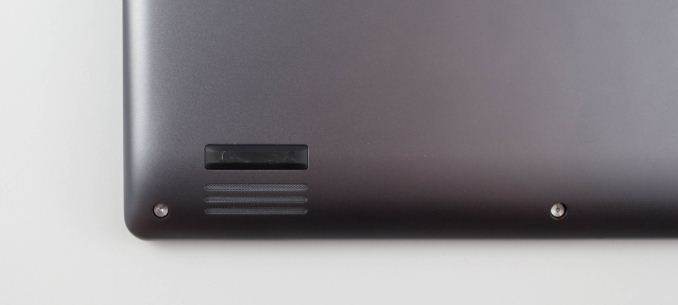
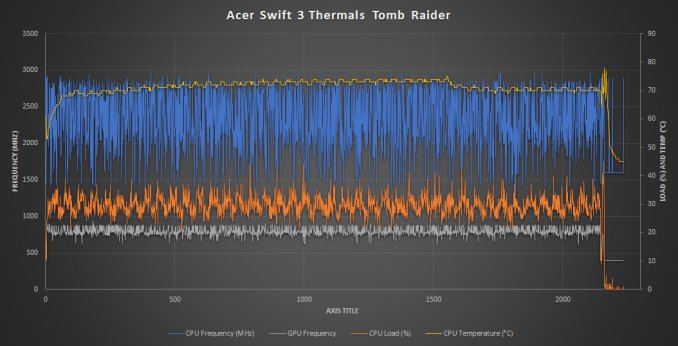
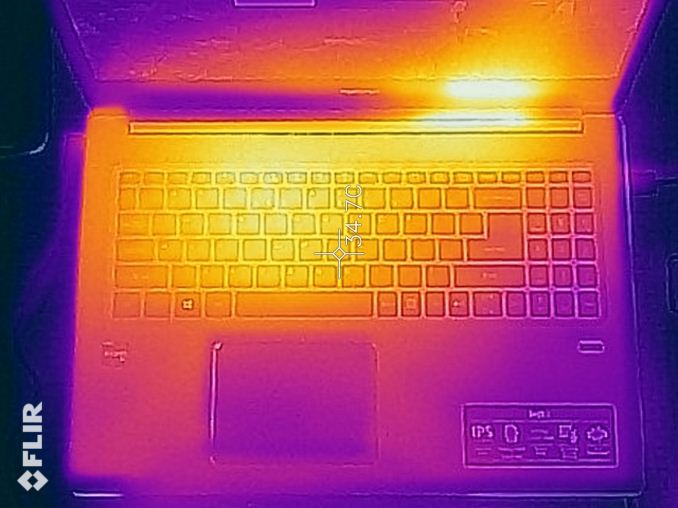
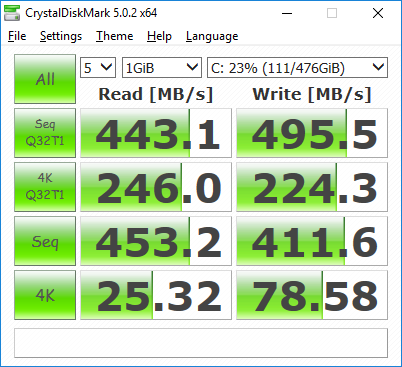








78 Comments
View All Comments
neblogai - Friday, May 4, 2018 - link
It is not reasonable to wish an integrated GPU with ~30Gbps memory bandwidth to demolish discrete GPUs that by themselves have higher TDP than this APU, and also double or triple the memory bandwidth. Showing the same result as 940MX is a wonderful result- as AMD solution does the same with no need for extra dGPU and memory chips on the motherboard, and cooling for them. And if more GPU power is needed- then discrete GPU should be used for AMD's laptop as well- games will run great with it's fast quadcore CPU.niva - Tuesday, May 8, 2018 - link
It's very reasonable to expect an APU system to deliver better battery life, especially in idle power scenarios, than one running a core i7 with a discrete GPU. Either something is wrong with this system, they forgot to change some setting in the BIOS, or this is a complete failure on the part. The idea that this is a gaming laptop is just stupid. It's an ultra book, with better graphics capabilities than an integrated Intel chipset, but still an ultra book. I'm not even talking about performance here, I'm strictly talking battery life.Also, the idea of just adding a discrete GPU to an ultra book... never mind.
neblogai - Tuesday, May 8, 2018 - link
Discrete GPU is switched off in non-gaming, so it is basically AMD APU vs Intel APU working. It is true that Intel's chips are more efficient- after all- for many generations Intel were milking desktop with quadcores, while investing into being better at low TDP power efficiency. That is at the time when AMD was balancing on the limit of bankruptcy, and staying in survival mode till Zen arrived. So- AMD sure has a lot to improve with their design, and OEMs- with laptop designs/optimisations when using AMD APUs.As for using discrete GPU in a Ultrabook- just have a look at a ASUS Zephyrus GM501 which is 2cm thin and has a GTX1070 and other no-compromise parts. And there are at least 3 lower tier chips from nVidia alone that sip less power, making gaming on an Ultrabook possible.
samal90 - Thursday, May 3, 2018 - link
That GPU power though. I can't wait to see what next year's APUs will be like with the 7nm Navi. Intel might as well just drop the R&D for integrated graphics and license from AMD like they did with the Vega.keg504 - Thursday, May 3, 2018 - link
What is CABC?Brett Howse - Thursday, May 3, 2018 - link
Content Adaptive Backlight Control. It can change the brightness depending on what's on the screen as a way to cut power draw, but it can be kind of annoying especially when it can't be disabled.keg504 - Friday, May 4, 2018 - link
Oh, thanks.Is this a recent feature OEMs have started implementing? This is the first time I'm seeing it in a review
iwod - Thursday, May 3, 2018 - link
I think there is something wrong with Ryzen JS vm benchmarks.Ryan Smith - Thursday, May 3, 2018 - link
That's what we thought. But everything repeatedly checks out and we can find no systematic flaws. It looks like it just takes the 2700U a bit too long to respond to short, bursty workloads.iwod - Friday, May 4, 2018 - link
Interesting. Would there be a small pieces on this topic specifically?Or in other words, Intel is very aggressive with their Turbo?
Also wondering if the Adrenaline drivers made any difference.